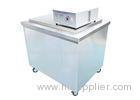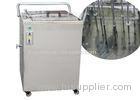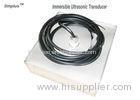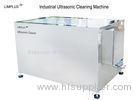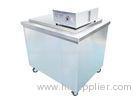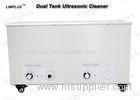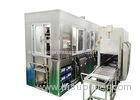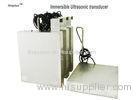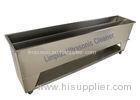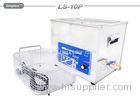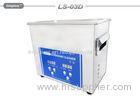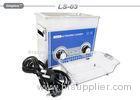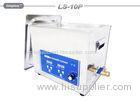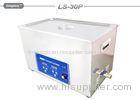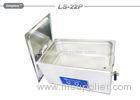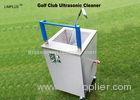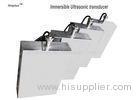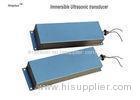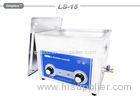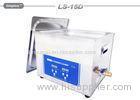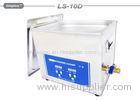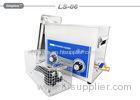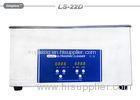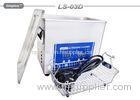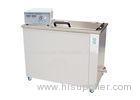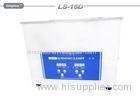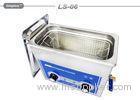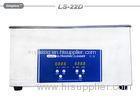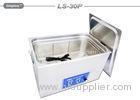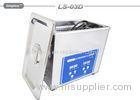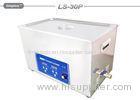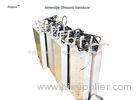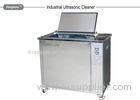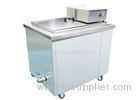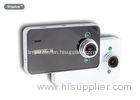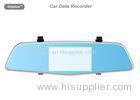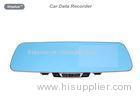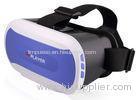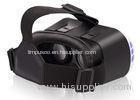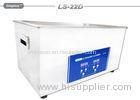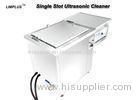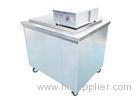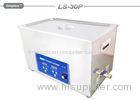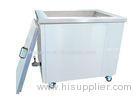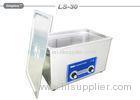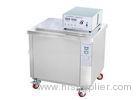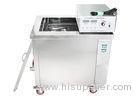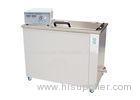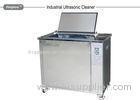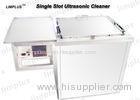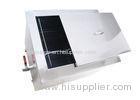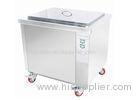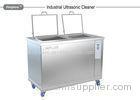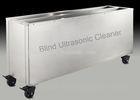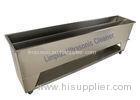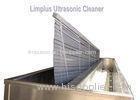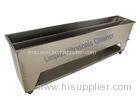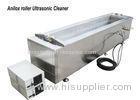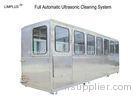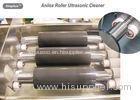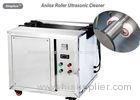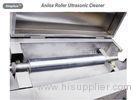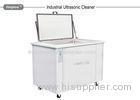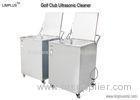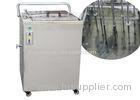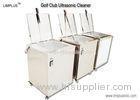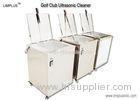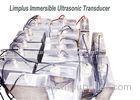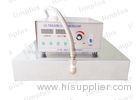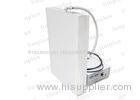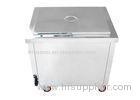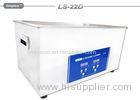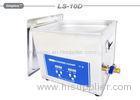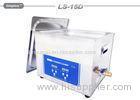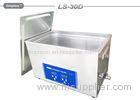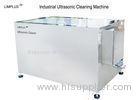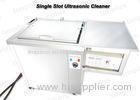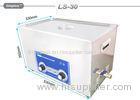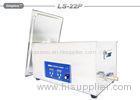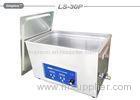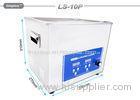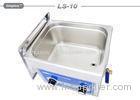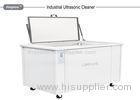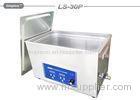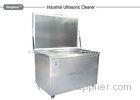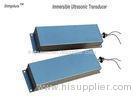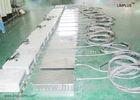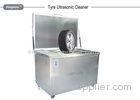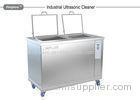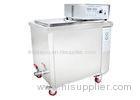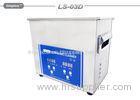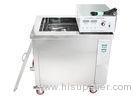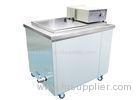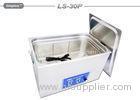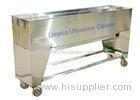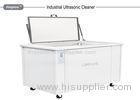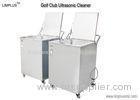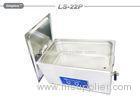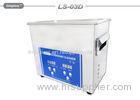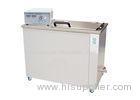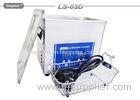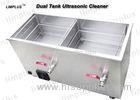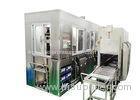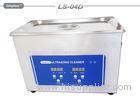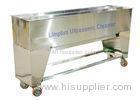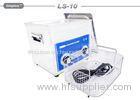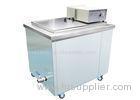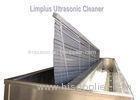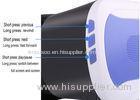|
Shenzhen Meixin Technology Co., Ltd.
|
Gold Index: 6357
Metal Parts Polishing Clean Table Top Ultrasonic Cleaner 22liter Digital Time Control
| Place of Origin: | Zhejiang, China (Mainland) |
|
|
|
| Add to My Favorites | |
| HiSupplier Escrow |
Product Detail
Limplus Metal Parts Polishing Clean Table Top Ultrasonic Cleaner 22liter Digital Time Control</strong
Limplus Metal Parts Polishing Clean Table Top Ultrasonic Cleaner 22liter Digital Time Control
How Limplus ultrasonic cleaner clean metal parts?
Ultrasonics is the science of sound waves above the limits of human audibility. Frequencies above 18 Kilohertz are usually considered to be ultrasonic. The frequencies used for ultrasonic cleaning range from 20,000 cycles per second or kilohertz (KHz) to over 100,000 KHz. The most commonly used frequencies for industrial cleaning are those between 20 KHz and 50KHz. 40KHz are more commonly used in small tabletop ultrasonic cleaners as it can remove the oil, dust, flux immediate and no damage to object surface.
Packing list:
1x LS-22D ultrasonic cleaner
1x SUS basket
1x SUS lid
1x power cord
1x English instruction manual
Application of ultrasonic cleaning:
| Healthcare | Dental and surgical instruments, optical, podiatry, general practice, hospitals, medical components |
| Manufacturing: | Aerospace, pharmaceutical, defence, medical devices, automotive, marine, filtration, moulding, plating & surface finishing, semi-conductors, printing technology and equipment, flux, tube |
| Maintenance | Automotive servicing, jewellery & watches, tools, weapons, Heat exchangers, oil & gas, commercial coffee boiler |
| Laboratory | Scientific Research, Mixing, Cell Disruption, extraction, pharmaceutical |
| Others | window blind, golf club, tattoo equipment, anilox roller, music equipment, weapons, electronics, etc. |
Key points:
1. With BLT type industrial ultrasonic transducer
2. SUS304 tank with long work life
3. With SUS basket and Lid
4. Certificate: CE
5. Movable basket
6. Reduce liability
7. Automatic cleaning
8. Environmentally friendly
9. Built-in thermostatically controlled heat
Specifications:
| Model | LS-22D |
| Tank capacity | 22L |
| Material | Stainless steel SUS304 |
| Frequency | 40KHz |
| Timer | 0-30min |
| Power supply | AC 100-120V, 50/60Hz; AC 220-240V, 50/60Hz |
| Ultrasonic power | 480W |
| Heating power | 500W |
| Tank Size | 500x300x150mm ( L x W x H ) (19.7"x11.8"x5.9“) |
| Overall Size | 530x330x310mm( L x W x H ) (20.9"x13"x12.2") |
| Carton size |
634x400x390 mm ( L x W x H ) (25"x15.7"x15.4") |
| N.W | 13 kg |
| G.W | 14 kg |
| Warranty time | 12 months |
| Shipping method | DHL , FedEx , UPS , TNT , EMS , ARAMEX , By Air,By sea |
Any capacity is available from us. Tank size can be design based on your requirement.
About warranty:
All products of brand of Limplus enjoy one year warranty.
Cavitation and Implosion
In water and most liquids, there is continuous transition as long as the amplitude or “loudness” of the sound is relatively low. As amplitude is increased, however, the magnitude of the negative pressure in the areas of rarefaction eventually becomes sufficient to cause the liquid to fracture because of the negative pressure, causing a phenomenon known as cavitation. Cavitation “bubbles” are created at sites of rarefaction as the liquid fractures or tears because of the negative pressure of the sound wave in the liquid. As the wave fronts pass, the cavitation “bubbles” oscillate under the influence of positive pressure, eventually growing to an unstable size. Finally, the violent collapse of the cavitation “bubbles” results in implosions, which cause shock waves to be radiated from the sites of the collapse. The collapse and implosion of myriad cavitation “bubbles” throughout an ultrasonically activated liquid result in the effect commonly associated with ultrasonics. It has been calculated that temperatures in excess of 10,000°F and pressures in excess of 10,000 PSI are generated at the implosion sites of cavitation bubbles.
FAQ:
Q: What cleaning solution should I use?
A: Advanced cleaning solutions are made up of a variety of detergents, wetting agents and other reactive components. A large variety of different formulas designed for specific applications. Proper selection is crucial for acceptable cleaning activity and to prevent unwanted reactions with the workpiece.
Q: Can ultrasonic cleaning damage parts?
A: Ultrasonic can't damage parts.
Ultrasonic cleaning is considered safe for most parts, although in some cases it is necessary to observe caution. Although the effects of thousands of implosions per second is very powerful, the cleaning

Related Search
Find more related products in following catalogs on Hisupplier.com
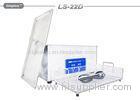
Company Info
Shenzhen Meixin Technology Co., Ltd. [China (Mainland)]
Business Type:Manufacturer
City: Shenzhen
Province/State: Guangdong
Country/Region: China (Mainland)



